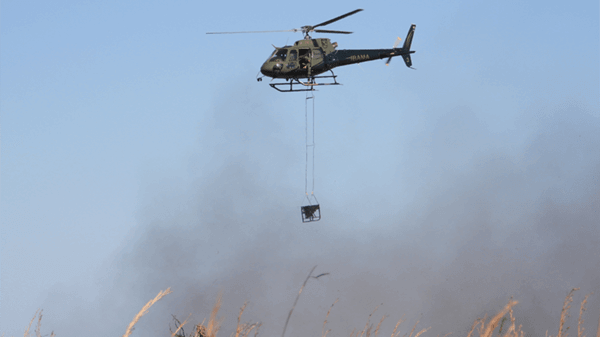A new way for prescribed burning

New technology spurs safer adoption of controlled burns. Nancy Argyle explains
As more countries adopt the North American wildfire strategy of prescribed or controlled burns, there is a growing awareness of the safety and efficacy issues that arise from some methods of fire ignition. Using fire to prevent or fight fire has been a strategy since the 1970s in both Canada and the USA – although, much earlier than that, it was a method adopted by early settlers, learned from indigenous peoples who used fire to clear land as well as increase access and visibility.
The goal of fire ignition is to reduce fuel loading on the ground that, if left unburnt, would drive intense future fires. Once the area’s fuel loading is eliminated, a controlled burn leaves behind a natural fire break that helps to reduce a future fire’s ability to travel or grow in size.
While the strategy is simple enough, the results have often been mixed due to issues with the technology of dispensing fire safely – a challenge when managing land that is already primed with dead branches, leaf debris and drought-stressed or diseased trees that are less fire-resistant.
To use controlled burns effectively and safely as a fire mitigation strategy, planning, training, and the best technology available is required. The Sling Dragon, developed by SEI Industries in Canada, represents the latest in dispenser technology and one that removes the fire ignition function from inside the helicopter. Instead, the Sling Dragon hangs from beneath the aircraft in much the same way a Bambi Bucket is utilized.
Additionally, the Sling Dragon uses spheres, called Dragon Eggs, which offer a unique delayed response, ensuring that the egg doesn’t ignite until it reaches the ground. To achieve this delay, during the very last function of dispensing, the Sling Dragon uses a needle to inject glycol that creates an exothermic reaction with other chemicals already in the Dragon Egg. This reaction takes 10–20 seconds to ignite, providing enough time for the egg to fall to its target before starting a fire.
With the Sling Dragon’s ignition occurring outside the aircraft, there is no need for an extra crew member since the pilot can safely operate it using a hand control switch and the results of the drop can be easily viewed on a map, thanks to a GPS tracker that records dropped Dragon Egg coordinates.
Brazil is one country that recently adopted the Sling Dragon through its Brazilian Institute of Environment and Renewable Natural Resources (IBAMA). By exponentially increasing its prescribed burning capability, IBAMA was able to achieve a number of very successful burn lines including one at the indigenous reserve of Kraolandia, in the state of Tocantins, which extended for an impressive 240km.
Acquired in December 2022, IBAMA’s three Sling Dragon units were the first to be used in South America and represented an innovative step forward in managing and protecting large tracts of land. The agency noted that the addition of the Sling Dragon has brought more efficiency and safety to its aerial ignition operations, allowing quick access to formerly unreachable or risky areas for ground crews.
More recently, the Sling Dragon was used by the Chico Mendes Institute for Biodiversity Conservation (ICMBio), in partnership with IBAMA, and for the first time on federal land reserves. In this case, the institute reported that they were able to access areas that were difficult to reach and were able to do in two days what would have taken weeks in the past using other methods.

April 2024
Issue
In the April special aerial firefighting edition, learn about the techniques and tools being employed; find out about the diverse capabilities of uncrewed aerial vehicles; see how the European Union is consolidating resources; review the damage that Australia has suffered from bushfires; explore Indonesian search and rescue processes; and consider if your helmet is due for a service or replacement; plus more of our regular content.
Editorial Team
The AirMed&Rescue Editorial Team works on the website to ensure timely and relevant news is online every day. With extensive experience and in-depth knowledge of the air medical and air rescue industries, the team is ready to respond to breaking industry news and investigate topics of interest to our readers.
